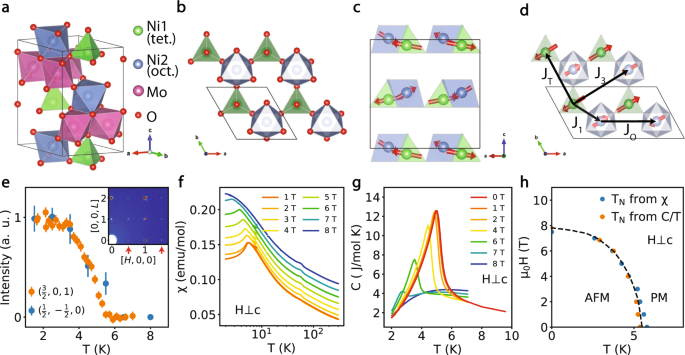2023-04-17 パデュー大学
このプロセスでは、印刷中にPVdfフィラメントの双極子を整列させることで、加わっている応力をよりよく表示することができます。これにより、3Dプリントされた部品は、強力なセンシング能力とカスタマイズされた形状の両方を持つことができ、時間とコストを節約することができます。
EPAM法は、コロナ電気ポーリングセットアップを備えた溶融堆積モデリング3Dプリンターで、PVdf力センサーのプリントに成功しました。
<関連情報>
- https://www.purdue.edu/newsroom/releases/2023/Q2/purdue-researchers-combine-electric-poling-and-3d-printing-into-a-single-step.html
- https://www.sciencedirect.com/science/article/abs/pii/S2214860422006376
- https://onlinelibrary.wiley.com/doi/full/10.1002/adem.202200485
電気を流すことで圧電素子となるポリフッ化ビニリデン膜の積層造形技術: 完全3D印刷機能材料へ向けて Electric poling-assisted additive manufacturing technique for piezoelectric active poly(vinylidene fluoride) films: Towards fully three-dimensional printed functional materials
Jinsheng Fan, Naomi Deneke, Shujia Xu, Brittany Newell, Jose Garcia, Chelsea Davis, Wenzhuo Wu, Richard M. Voyles, Robert A. Nawrocki
Additive Manufacturing Available online: 26 October 2022
DOI:https://doi.org/10.1016/j.addma.2022.103248

Abstract
The development of science and technology simplifies the fabrication of functional materials and devices. Polymeric piezoelectric materials have attracted interest for actuation, sensing, energy harvesting, and storage applications due to their capability to sustain larger strains than ceramic piezoelectric materials. In this work, a novel electric poling-assisted additive manufacturing (EPAM) technology that integrates a fused deposition modeling (FDM) three-dimensional (3D) printer with a corona electric poling setup is demonstrated to directly print piezoelectric active materials with improved piezoelectric characteristics. The developed EPAM technology overcomes two main shortcomings of the conventional manufacturing methods for poly(vinylidene fluoride) (PVdF) materials: (1) their shapes are constrained to planar or fiber-like geometries, and (2) the need for additional electric poling as a post-processing treatment. Compared with the contact poling method, the EPAM method eliminates the need to apply electrodes for poling. The EPAM process can accomplish stretching and poling simultaneously which are necessary conditions for the polarization. During the EPAM process, stretching the molten PVdF rod rearranges the amorphous strands in the film plane, and the applied electric field aligns dipoles towards the same direction. The EPAM process can print free-form PVdF structures and induce the formation of β-phase, which is primarily responsible for the piezoelectric response. The Fourier-transform infrared spectroscopy (FTIR) results indicate the β-phase content increased from 15.38% to 17.14% corresponding to unpoled printed and EPAM printed samples, respectively. PVdF force sensors were successfully printed, and the piezoelectric activity (pC/N) was calculated based on the piezoelectric output voltage. The piezoelectric activity has a positive correlation with the piezoelectric coefficient that is explained in detail in section 3.2. The results demonstrate that the average piezoelectric activity of EPAM printed PVdF films was 47.76 pC/N, or about five times higher than unpoled 3D printed films, at 9.0 pC/N. The piezoelectric activity of unpoled 3D printed PVdF films indicates that 3D printing in the absence of an electric field does not result in dipole alignment. The 3D printed samples show an anisotropic mechanical behavior, and the bonding surface strength is sensitive to the printing speed. The maximum Young’s modulus (534.63 MPa) occurred at 3 mm/s and 0° infill, and the highest ultimate tensile strength (UTS) (25.35 MPa) was achieved at 20 mm/s, and 90° infill. Both the Young’s modulus and UTS from the EPAM printed samples are lower than unpoled samples. A fully 3D printed device was demonstrated to identify the position and magnitude of forces and results were visualized via structure-embedded integrated Light emitting diodes (LEDs). Overall, with the advantage of mechanical structural design flexibility and ease of printing of piezoelectric materials, the developed EPAM technology opens a new avenue to simplify device design and fabrication methodologies along with low-cost implementations.
β相ポリ(フッ化ビニリデン)ベースの容量性温度センサーにおける添加剤製造の影響 Effect of Additive Manufacturing on β-Phase Poly(Vinylidene Fluoride)-Based Capacitive Temperature Sensors
Jinsheng Fan, Brittany Newell, Jose Garcia, Richard M. Voyles, Robert A. Nawrocki
Advanced Engineering Materials Published: 09 July 2022
DOI:https://doi.org/10.1002/adem.202200485

Abstract
Additive manufacturing, commonly known as 3D printing, significantly simplifies the manufacturing process for soft electronics. This work demonstrates the feasibility of a fully 3D-printed flexible poly(vinylidene fluoride) (PVdF) capacitive temperature sensor. The sensor is constructed using fused deposition modeling (FDM)-printed PVdF film as the dielectric (thickness ≈180–280 μm) sandwiched between two parallel Direct Ink Writing (DIW) printed silver electrodes (entire device thickness ≈200–380 μm). The motion of the nozzle can facilitate mechanical drawing to the molten PVdF filament, which is a necessary condition to increase the β-phase content (critical for the sensitivity of the sensor). With optimized printing parameters, the highest β-phase content (21.30%) is achieved when printing with a nozzle temperature of 200 °C and a print speed of 70 mm s−1. The research demonstrates the application of the device as a temperature sensor by applying heating-and-cooling cycles from room temperature (25 °C) up to 140 °C while measuring the capacitance as a function of frequency under different temperatures. The sensor exhibits a stable sensitivity of 3 pF °C−1 at 102 Hz and higher frequencies and improved sensitivities at frequencies higher than 102 Hz after dielectric polarization via the corona poling method.



